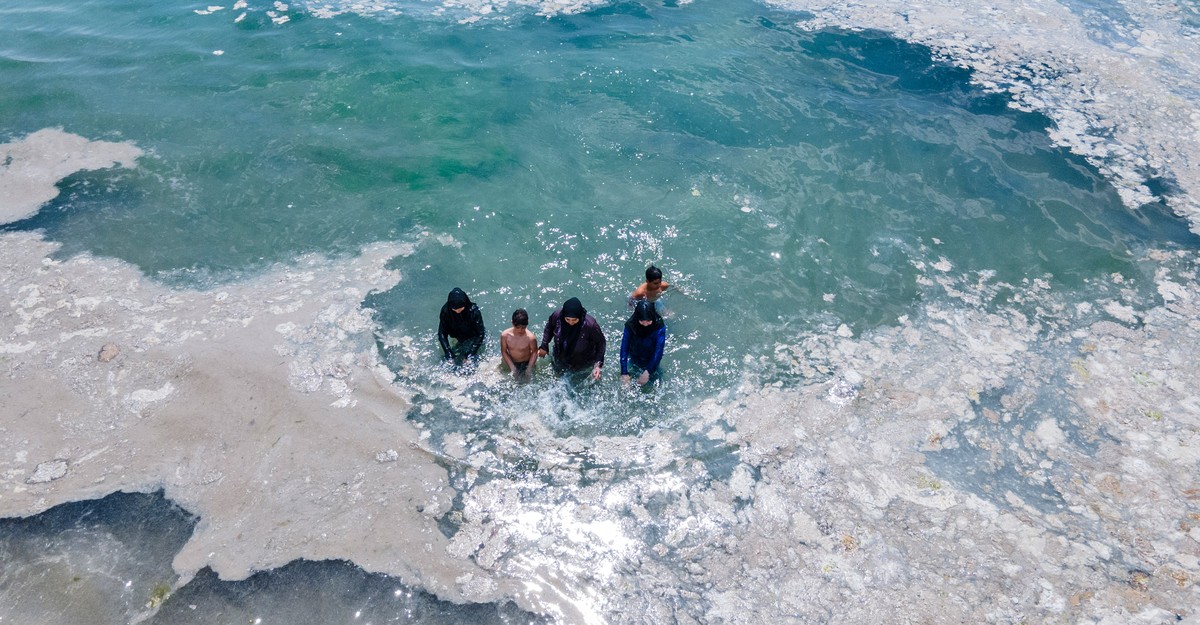This intense warming, along with decades of abuse from pollution and overfishing, sent the Marmara into a state of maritime shock. At the end of 2020, increased concentrations of phosphorus and nitrogen led to a boom in phytoplankton, single-celled organisms whose name means “plant drifter” in Greek. The Marmara’s warming surface temperature also caused its waters to stratify, slowing the currents that would normally help disrupt algae growth.
Eventually, the phytoplankton began to run out of nutrients, causing the cells of some species to exude a sticky substance. As these cells died, they collided and stuck together, aggregating into globs that hovered in the warmest layer of the stratified water. With time and exposure, the globs turned into a submerged mat of mucus that trapped nearly everything around it—bacteria, fish larvae, dead cells, debris. Bacteria thrived on the dead phytoplankton, adding to the mat’s mass. “At that point, it takes on a life of its own,” Mustafa Yucel, a marine-science professor at Middle East Technical University’s Institute of Marine Science, told me. With increasing water temperatures, he said, we should prepare to see more extreme reactions in our seas—including invasive-species outbreaks and massive algal and seaweed blooms.
According to Ayşen Erdinçler, an environmental-science professor at Boğaziçi University and the head of Istanbul’s Department of Environmental Protection and Development, the risk of contracting a bacteria-borne illness from swimming increases 12 to 18 times when concentrated mucilage is present.



The most disgusting symptom of climate change so far